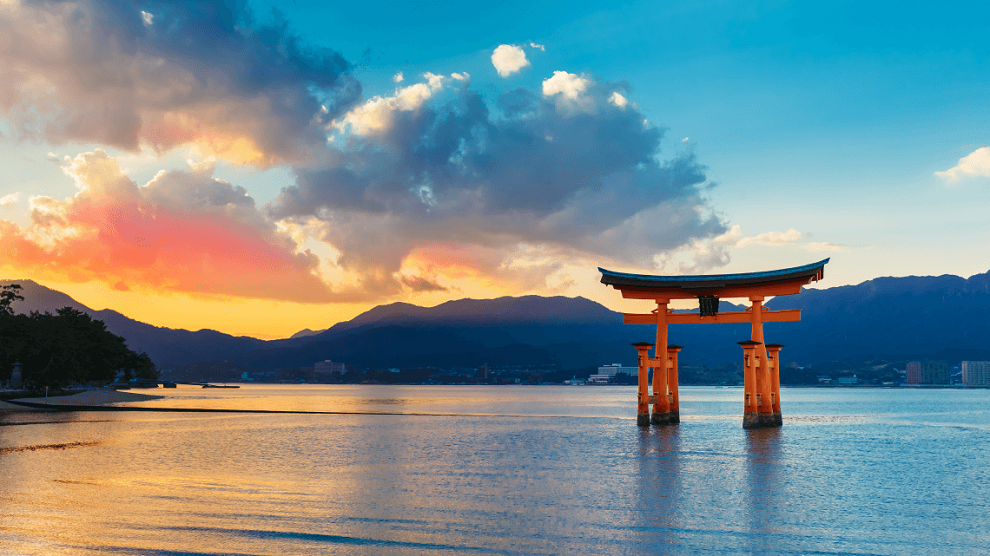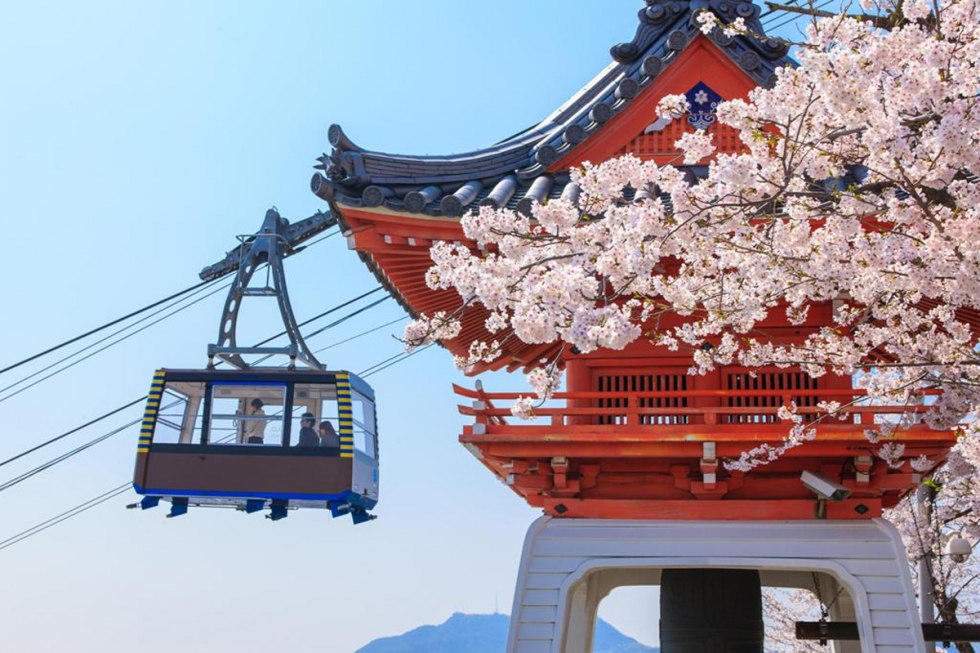Temples and Shrines
The most famous shrine in Hiroshima is the Itsukushima shrine, and some other shrines, temples and a Five-storied Pagoda are also around there. There are some old shrines and temples in countryside of Hiroshima and some had been built by the daimyo in medieval times. When visiting the famous temples in autumn, - for example, the Buttsuji Temple in Mihara-city and the Senkoji Temple which is famous on pilgrimage route in Onomichi-city, you may enjoy the view of colored leaves.
This shrine is among the best in Japan with the superb architectural beauty of its bold and unique structure centered on the sea built in the elegant Shinden Zukuri architectural style. The shrine was built in its current form by Kiyomori Taira in the 12th century. The contrast with the greenery in the background is extraordinarily beautiful. Itsukushima Shrine was registered as a world heritage site in 1996 (Heisei 8). There are many cherry trees around the shrine, so many visitors come here in spring to enjoy the blossoms.

In 1937, Kobayakawa Haruhira constructed this temple, inviting a Buddhism master Guchu Shukyu who received special Buddhism training in China. He opened this mountain against five big temple mountains in Kyoto. It is the only great headquarter within West Japan. It has been known as one of the best Zen schools, and many people, from corporations and schools, are lately using this temple as a training institute. A group of temples stand in a row in the property, surrounded by a cedar grove. In fall season, the site becomes crowded with lots of visitors visiting to admire the beautiful scenery.

The temple is said to have been founded in 806, the first year of the Daido era. The vermillion-lacquered main hall is also called the Red Hall and, together with the bell tower famous for chimes on New Year's Eve, is a symbol of Onomichi. The big rock beside the main hall, Tama no Iwa, is said to have been a landmark for voyages due to a shining gem placed on it in the past.



































